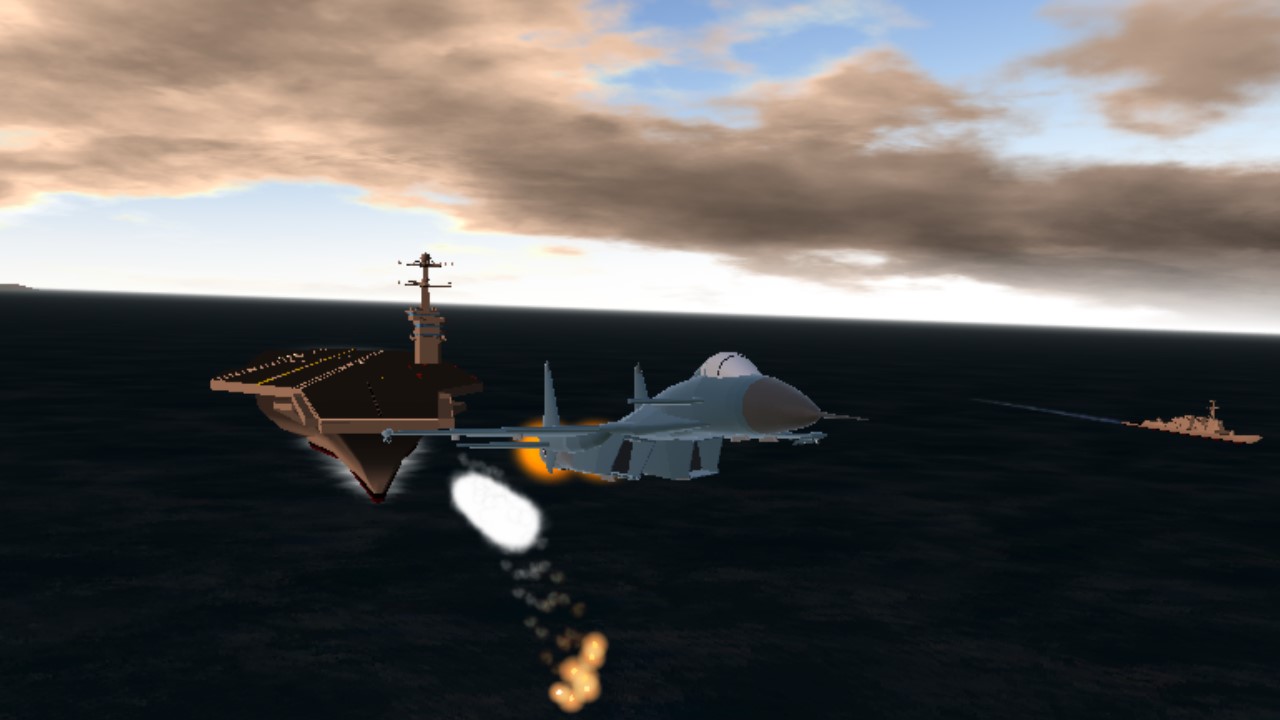AG1-Open Parachute
AG2-Activate Tail Hook
AG3-
AG4-Activate Thrust Vectoring
AG5-
AG6-
AG7-
AG8-
The Sukhoi Su-33 (Russian: ????? ??-33; NATO reporting name: Flanker-D) is an all-weather carrier-based twin-engine air superiority fighter designed by Sukhoi and manufactured by Komsomolsk-on-Amur Aircraft Production Association, derived from the Su-27 and initially known as the Su-27K. Compared with the Su-27, the Su-33 has a strengthened undercarriage and structure, folding wings and stabilators, all for carrier operations. The Su-33 has canards, and its wings are larger than the Su-27 for a slower stall speed. The Su-33 has upgraded engines and a twin nose wheel, and is air refuelable.
A Russian Navy Sukhoi Su-33
Role: Carrier-based air
superiority fighter and -
multirole fighter.
National origin: Soviet Union/Russia.
Manufacturer: Sukhoi, Komsomolsk-on-
Amur Aircraft Production
Association.
First flight: 17 August 1987.
Introduction: 31 August 1998 (official)[2].
Status: In service.
Primary user: Russian Navy.
Produced: 1987–1999.
Number built: approx. 35.
Developed from: Sukhoi Su-27.
Variants: Shenyang J-15.
First used in operations in 1995 aboard the aircraft carrier Admiral Kuznetsov,[N 1] the fighter officially entered service in August 1998, by which time the designation "Su-33" was used. Following the break-up of the Soviet Union and the subsequent downsizing of the Russian Navy, only 24 aircraft were produced. Attempted sales to China and India fell through. With plans to retire the Su-33 once they reach the end of their service life, the Russian Navy ordered the MiG-29K as a replacement in 2009.
Specifications
General Characteristics
- Created On Android
- Wingspan 51.1ft (15.6m)
- Length 79.2ft (24.1m)
- Height 18.4ft (5.6m)
- Empty Weight 33,555lbs (15,220kg)
- Loaded Weight 45,382lbs (20,585kg)
Performance
- Power/Weight Ratio 1.485
- Wing Loading 63.6lbs/ft2 (310.3kg/m2)
- Wing Area 714.1ft2 (66.3m2)
- Drag Points 13500
Parts
- Number of Parts 159
- Control Surfaces 6
- Performance Cost 827




